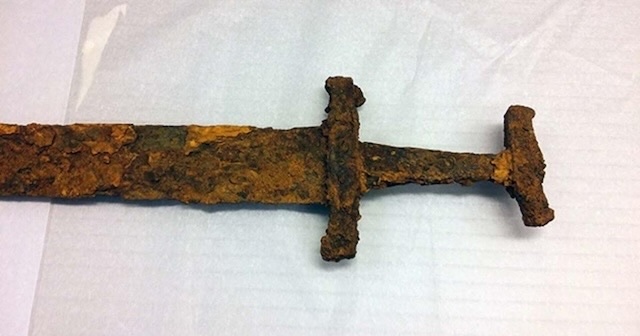Archaeological discoveries often come from unexpected sources. In Iceland, a group of men hunting geese stumbled upon a rare and extraordinary artifact—a 1,000-year-old Viking sword. This find has reignited interest in the Viking Age and the Norse settlers who shaped Iceland’s early history. The discovery sheds light on Viking-era Iceland and offers a glimpse into the life of the fierce Norse warriors who once roamed these lands.
Ingólfur Arnarson: The First Norse Settler in Iceland
To fully appreciate the significance of this Viking sword discovery, it is essential to understand the history of Iceland’s settlement. According to the Icelandic Book of Settlements, Landnámabók, the first permanent Norse settler in Iceland was Ingólfur Arnarson. In 874 AD, Arnarson arrived in Iceland with his wife and vowed to build his home where the gods guided him. Following Viking tradition, he cast the carved pillars of his high seat into the sea and allowed the gods to determine where they would land.
After three years of searching, his slaves found the pillars in a large bay in the southwest, where Ingólfur established his farm. This settlement became Reykjavík, now Iceland’s capital. Ingólfur’s journey represents the beginning of Norse exploration and settlement in Iceland, marking the start of a new era for the island.
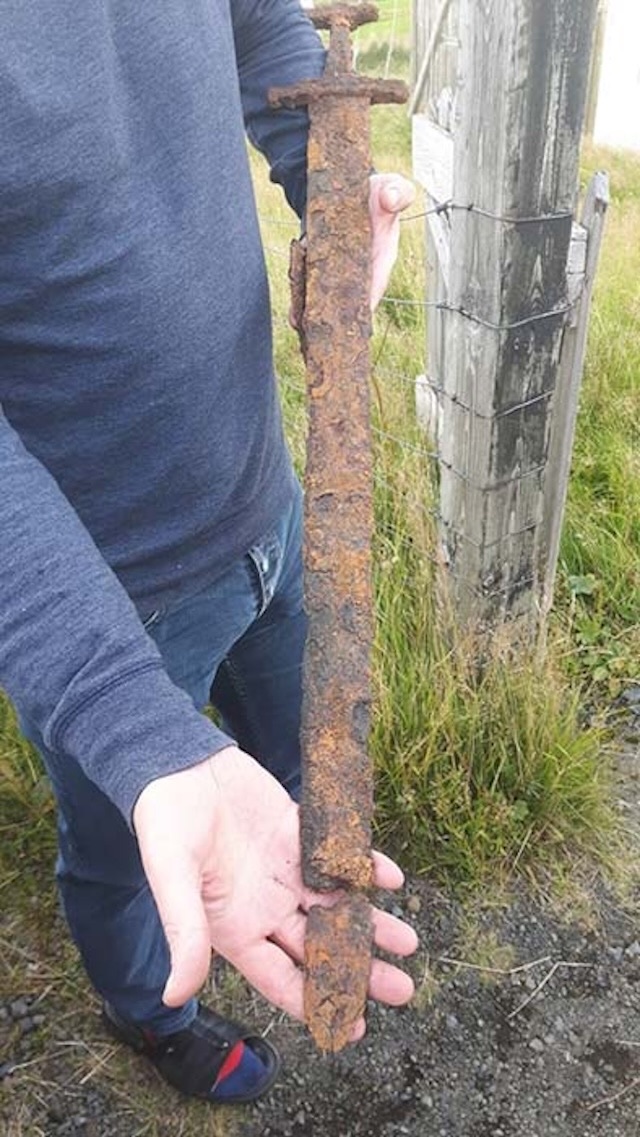
The Discovery of a Viking Sword During a Goose Hunt
In 2017, a group of hunters searching for geese in Iceland made an unexpected discovery. While traversing the rugged terrain, they stumbled upon a Viking sword lying among the rocks. The sword, remarkably well-preserved after 1,000 years, offers a unique window into the Viking Age and raises questions about its origins.
The Cultural Heritage Agency of Iceland took immediate interest in the artifact. Initial testing dates the sword to approximately 950 AD or earlier, aligning with the height of Viking settlement in Iceland. This sword is a significant find, as it is only the 23rd Viking sword discovered in Iceland, making it a rare and valuable piece of history.
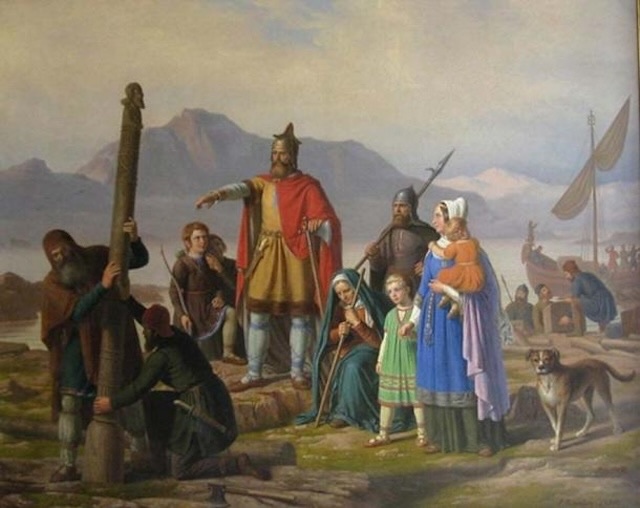
Historical Background of Viking Swords
Viking swords were not just weapons; they were symbols of power, wealth, and status. During the Viking Age (roughly 800–1050 AD), swords were considered the most prized possession of a warrior. Unlike axes and spears, swords were expensive to produce, requiring skillful craftsmanship and high-quality iron. As a result, owning a sword was often a sign of a warrior’s elite status.
Viking swords typically featured intricate designs on the hilt, often decorated with silver, copper, or bronze. These embellishments reflected the warrior’s rank within Viking society. Swords were passed down through generations, with each bearer adding to the legacy of the blade. Naming swords was also common; they were treated with reverence, believed to carry the spirit of the warriors who wielded them.
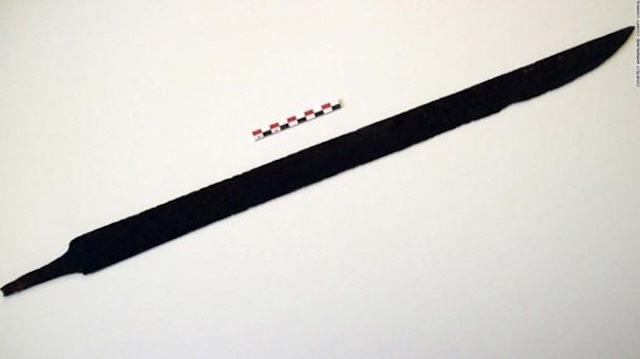
Cultural Importance and Preservation of the Sword
The sword discovered by the hunters has now been passed to the Cultural Heritage Agency of Iceland for further testing and preservation. Preserving a 1,000-year-old artifact requires careful conservation techniques. The sword was likely made from high-quality iron, which contributed to its remarkable preservation despite the harsh Icelandic climate. Researchers believe the cold and dry conditions in the mountains played a crucial role in keeping the sword in such good condition over the centuries.
The agency will conduct detailed testing to learn more about the sword’s composition and history. Further investigation may reveal where the iron came from, which could offer insights into the trade routes and craftsmanship of the Viking era.
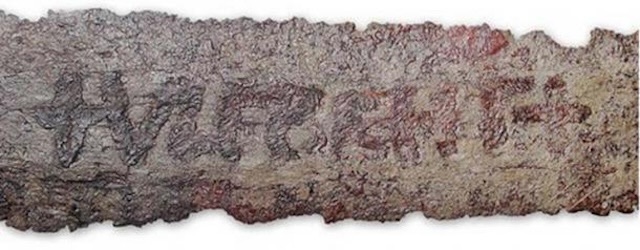
A Rare and Valuable Find: Comparison to Other Viking Swords
While Viking hoards—including coins, jewelry, and household items—are commonly found in Iceland and other Nordic regions, finding an intact Viking sword is far rarer. Viking warriors were often buried with their swords, making these weapons treasured archaeological finds. The sword discovered in Iceland is unusual because it was found in an isolated location, with no burial site or other artifacts nearby.
In comparison to other Viking sword finds, such as the sword discovered by a hiker in Norway in 2016, this new Icelandic sword offers a mystery. How did it end up in such a remote area? One plausible explanation is that the sword belonged to a warrior who got lost or injured while traveling. The difficult terrain and unpredictable Icelandic weather could have caused him to die far from his companions, with wild animals eventually scattering his remains.

The Ulfberht Sword: A Special Viking Weapon
Although the Viking sword found by the hunters is significant, it does not bear the mark of the famous Ulfberht swords. The Ulfberht swords were legendary Viking weapons, known for their extraordinary quality and craftsmanship. These swords, made from high-purity steel, were far ahead of their time in terms of metallurgical advancement. In fact, scientists were long puzzled by how Vikings achieved such sophisticated metalworking techniques centuries before the Industrial Revolution.
Only about 170 Ulfberht swords have been discovered, making them incredibly rare and highly prized. These swords were owned by the wealthiest and most powerful Vikings, symbolizing their dominance on the battlefield. While the newly discovered sword in Iceland is not an Ulfberht, it still represents a rare and valuable piece of Viking history.
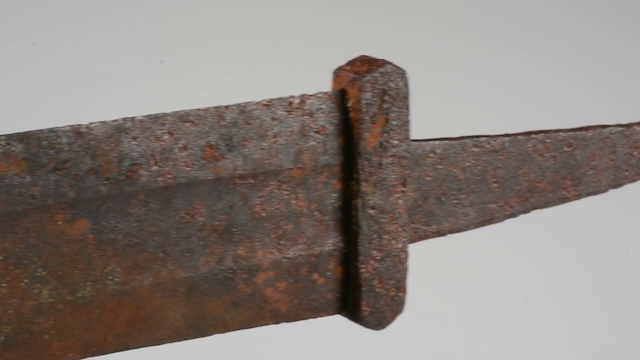
The Enigmatic Sword: Questions That Remain
Despite the sword’s significance, many questions remain unanswered. What led the Viking warrior to this remote location? Was he separated from his group, lost in a blizzard, or perhaps fleeing from enemies? The lack of any burial site or additional artifacts only deepens the mystery.
Archaeologists may never fully understand the circumstances surrounding the sword’s abandonment. Nevertheless, this find provides a rare glimpse into the life of a Viking warrior. Each discovery, no matter how small, adds to the broader understanding of the Viking Age and the people who shaped it.
Conclusion: A Treasure from the Viking Age
The discovery of a 1,000-year-old Viking sword in Iceland serves as a reminder of the rich history beneath the island’s surface. From the early days of Norse settlement to the fierce Viking warriors who roamed its mountains, Iceland’s past is filled with stories waiting to be uncovered. This sword, found by chance during a goose hunt, offers a rare and exciting opportunity for historians and archaeologists alike.
As the Cultural Heritage Agency of Iceland continues to study the sword, it may reveal more about its origins and the warrior who once wielded it. For now, it stands as a testament to the enduring legacy of the Vikings and the mysteries still hidden in Iceland’s rugged landscape.
